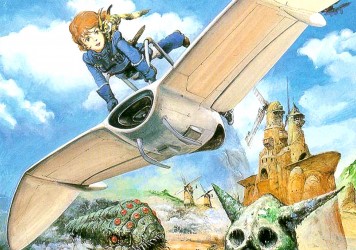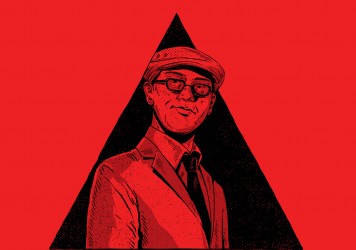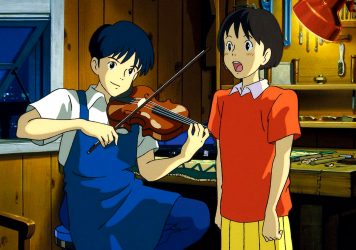Less a swansong and more a heronsong from the Japanese maestro Hayao Miyazaki, a mystical and ambitious message of hope for the future.
The Boy and the Heron may or may not be Hayao Miyazaki’s last film. The 82-year-old Studio Ghibli head previously announced his retirement after completing Princess Mononoke in 1997, Spirited Away in 2001, and The Wind Rises in 2013. But at the Toronto International Film Festival, a colleague of the great man announced that he is at work on new projects. Yet it sure feels like the end of something. The Boy and the Heron is richly self-synthesising and achingly sentimental, collating artistic motifs from across the Miyazaki filmography and nakedly articulating the hopes it places in the next generation.
The story begins with a World War Two bombing raid over Tokyo, in which young Mahito witnesses the death of his mother in an uncharacteristically stylised sequence making unprecedented-for-Miyazaki use of slow motion and point-of-view shots – exciting new techniques in a film whose look then becomes notably retro. Mahito and his father, like the parent and children in My Neighbor Totoro, are a fractured family who move to the country to be made whole again; in this case, father Soichi will wed his late wife’s younger sister, and move into her family’s estate, staffed by a phalanx of bent-backed benevolent crones. But on the grounds of the estate is a mysterious stone tower, turreted at the top like a witch’s hat, which is the roosting place of a heron who takes a curious interest in Mahito.
Beings in Miyazaki films are often changeable, drawn with shifting outlines and characterised with shifting moralities and motivations. His plotting is likewise flexible, perhaps never moreso than here – the rules of the film’s world are tough to define, making it quite hard to completely take in on a first pass. But even this flux befits an artist who has so frequently focused on stories of adolescence, coming-of-age – of becoming.
The hero’s journey, with its obstacles and perils, its guides and helpers, reads in summary like a compendium of Miyazaki’s careerlong interest in Western fairy tales, with elements echoing Charles Perrault and the Brothers Grimm, as well as Greek mythology and CS Lewis. And now the visual style teems, as in the similarly plotted Spirited Away, with supernatural creatures and waves of beasts streaming around Mahito like individual droplets of water – a particularly highlight is a menacing flock of parakeets, with their chests puffed out like a general’s.
The original Japanese title of The Boy and the Heron translates as How Do You Live?, after a 1937 novel for young adults structured as a back-and-forth between a promising 15-year-old boy and his worldly uncle. Mahito’s journey to the centre of a crumbling underworld is, essentially, an apprenticeship, never moreso than when he arrives at the foot of the ageing magus who created the world Mahito will, perhaps, inherit.
Little White Lies is committed to championing great movies and the talented people who make them.
Published 24 Dec 2023
The possible final film by the Ghibli godhead himself, Hayao Miyazaki. We’re there.
A mind-mangling, logic-teasing explosion of poetry, philosophy and pure emotion.
A more perfect final statement you could not imagine.

Gorgeous original artwork spanning three decades of the iconic animation studio.

Meet the director of the beautiful new film widely rumoured to be Studio Ghibli’s last hurrah.

The first and only film from Miyazaki protégé Yoshifumi Kondo stands among the studio’s best works.